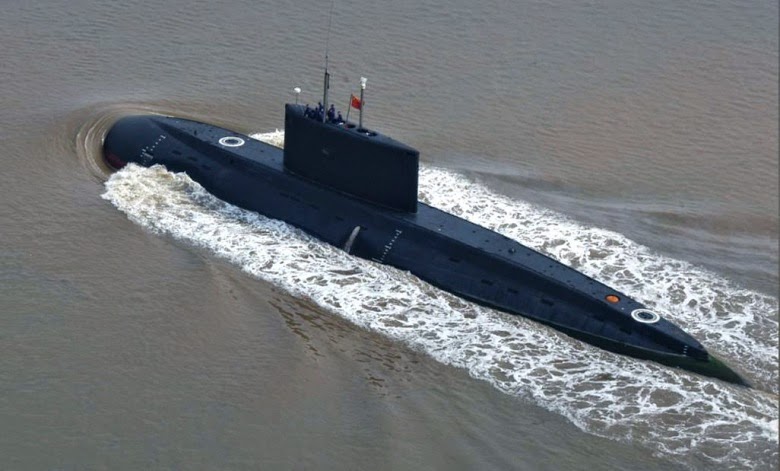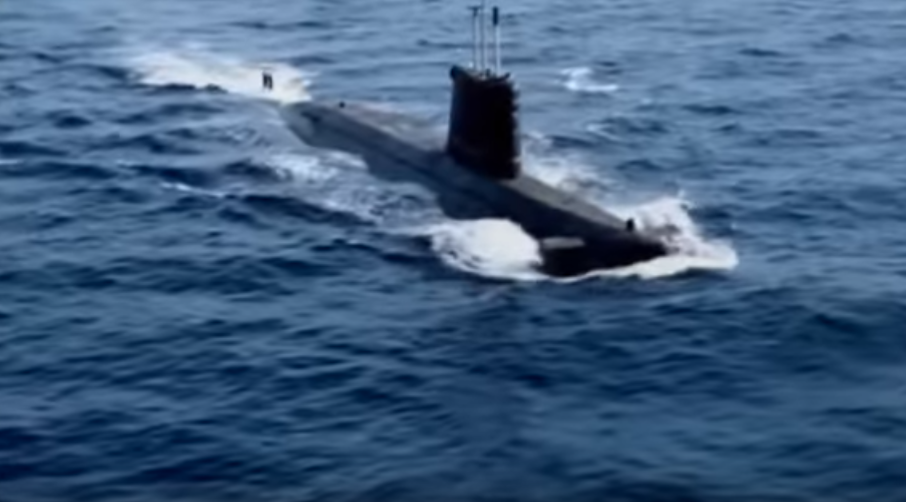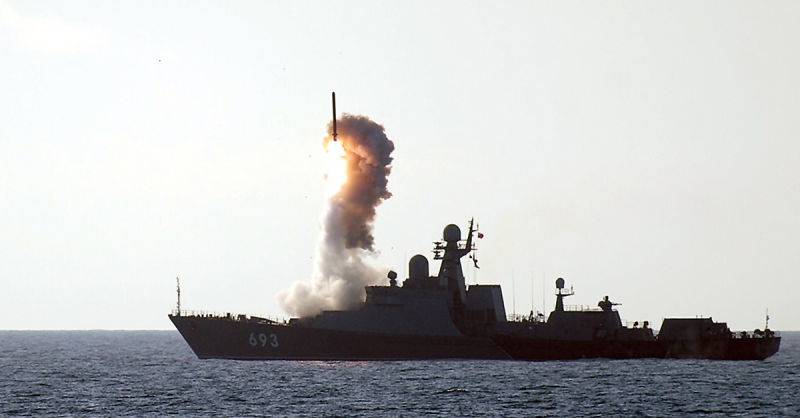354Views 13Comments

China confirms submarine sale to Pakistan
In a recent conference, the Chairman of China Shipbuilding Industry Corporation (CSIC – the manufacturing arm of China Shipbuilding & Offshore International Co. Ltd or CSOC) Hu Wenming confirmed that CSIC had secured a contract to supply eight attack submarines to Pakistan (China People’s Daily).
Notes & Comments:
Hu Wenming’s comments are the first verifiable Chinese comments regarding Pakistan’s submarine order, and they should serve as confirmation that the program is now with no doubt in Pakistan’s procurement pipeline. Pakistan ordered eight air-independent propulsion (AIP)-powered conventional submarines, four of the ships will be built by Karachi Shipyard & Engineering Works (KSEW) in Pakistan. CSIC will set up a training centre – in relation to the transfer-of-technology and co-production element – in Karachi.
According to the Chief Project Director of the program, the first submarine will be delivered in 2022, and a subsequent three will be delivered by the end of 2023. The remaining four – i.e. the batch to be produced by KSEW – will be delivered by the end of 2028. Specific details into the make of the submarines have not been disclosed, though it is likely to be the CSOC S20, an apparent export derivative of the Type 039 Yuan.
In light of the relatively heavy order, it is apparent that the Pakistan Navy is being tuned for a strong anti-access and area denial (A2/AD) mission profile. If one is to assume that the submarines are AIP-equipped S20s, then the PN’s forthcoming submarines would have a submerged displacement of 2,200-tons. This is smaller and lighter than the People Liberation Army Navy (PLAN)’s Yuan-class, which has viewed – at least by retired U.S. Navy Captain Christopher P. Carlson (via the U.S. Naval Institute) an ocean-faring design, as opposed to a coastal A2/AD-centric design (akin to the ThyssenKrupp Marine Systems Type 214).
For Pakistan, a smaller and lighter submarine could offer a number of advantages. First, as a less costly design, it could be procured in relatively sizable numbers. Second, Pakistan’s A2/AD strategy does not require it to send submarines into the outer edges of its exclusive economic zone (EEZ), hence the Yuan’s ostensibly greater range is a non-factor. Third, a smaller submarine offers more flexibility in terms of the Navy’s AIP selection. In other words, a lighter design could enable the Navy to opt for fuel-cell AIPs, which – while low output – could offer superior submerged endurance (via superior fuel efficiency). The low output could be offset by the lighter design, enabling the PN to possess a submarine with reasonable underwater speed (whilst still benefitting from relatively long endurance).



13 Comments
by GhalibKabir
Smart tactic. 9-12 silent SSKs in the murky waters of the Arabian sea will be a pain for my country’s navy. China is playing a very good chess game and upping the ante for the IN. Here, sadly the german made variable depth towed sonars (acquired 2014, not installed yet), low frequency passive sonars and the advanced thin array low frequency sonars plus dedicated ASW copters (S-70) have been delayed for too long now. Given what PN-PLAN are doing, my country should be screaming ASW 24×7….unfortunately right now too much focus is on ASuW.
by John Rue
I doubt Chinese subs will be as silent as western ones. India is buying additional P-8 planes. Probably subs will still have a better chance of surviving than surface ships. Pakistan should only focus on fast attack boats and should not bother investing in heavy duty ships. Make use of long coastal line to have air assets ready. If they make right strategy , they can be successful in having a proper defence.
by HARSH V ADITYA ( EX ECHELON 4)
Whatever deficiencies in IN capabilities you have mentioned will be overcome before these sub’s join the PN. We are thinking of installing sea bed sensors to detect submarines plus DRDO & IIT MUMBAI are working on underwater drones.
by GhalibKabir
DRDO and Naval Research Labs underwater record has been underwhelming. The HUMSA NG Sonar on ships is no good for tropical waters (temperature gradient/water characteristics render the bow sonar a very limited utility item) while Underwater drones are futuristic. The reality is underwater SOSUS, towed variable depth sonar are in severe shortage and so are ASW copters. The Kamorta class need sonars, advanced torpedoes and ASW helos to be of any value…DRDO has many successes, sonars are not one of them. The NAGIN was a failure and was mothballed in 2012 and DRDO still has no answer. This is one case, over promise and under delivery blame is very valid.
by Headstrong
USHUS – do look it up
by Manju
Nope, they are attack submarines designated to deal with anti-ship warfare to the max.
by Salman Khan
Yes and they are also making advanced radars too. All things really point at China’s capability.
by Manju
One major to focus on, out of the 8,The Chinese built 4 will be delivered by 2023 and next 4 are to be built in Karachi by 2028( if proper timelines are maintained).I just wonder Diesel-electric subs might be old school thing by then, even though they possess AIP which increases its underwater duration.Could be only handy in patrolling sovereign waters rather than blue water services.
by GhalibKabir
USHUS is a decent submarine sonar that has over run installation time lines again and again. I admire DRDO/Naval labs etc for many successes, but SOSUS, Ship mounted active towed array sonar, low frequency underwater passive sonar etc. is not one of their successes.
In all the sonar categories ranging from passive, ranging, surveillance, ranging, intercept and active, we need some very competent products as the Arabian Sea, BoB, IoR is getting cluttered with SSKs, SSNs.
@Aditya, I wish S-70 decision was made faster and so was the torpedo matter. it seems the S-70 is stuck due to price issues and lack of BECA/CISMOA as sensitive sensors cannot be transferred to IN if not. for torpedo, it seems F-21 selection means Scorpene class needs to under go substantial engineering modifications…One hopes the PM and DM can get a G2G deal going quickly for the F-21 torpedoes.
by John Rue
I suppose you have been in one of them 🙂 you sound fairly confident. There is difference between sending shuttle to space and inventing technology to keep subs quiet. Pakistan has no choice anyway.
by Alex Retiman
Right … going by your logic Malaysia inking to buy 4 surface vessels from China, and countries like Indonesia Vietnam, the Philippines and Myanmar buying weapons from China “had no choice but to go to China”. I would suggest you stand in front of a mirror and have a look at the person standing because that person is talking a lot of BS.
by John Nobody
now we are comparing apples and oranges… surface vessels and subs are two different animals. Its not necessarily money , it could be political reason too. Chinese developments are pretty much up in the cloud, nobody knows real data about them. Keeping sub silent under the sea is a different kind of thing. I am just observing the patterns here.. PAF and PN always prefer western equipment for a reason.
by John Rue
Now I could be wrong here and I dont know how quiet Chinese subs really are… but generally speaking an expert had once told me that Diesel-electric are most difficult to detect. Again, I am not a big fan of Chinese Tech. On my scale its western equipment and then Russian and then finally Chinese so its pretty much the bottom of the barrel.